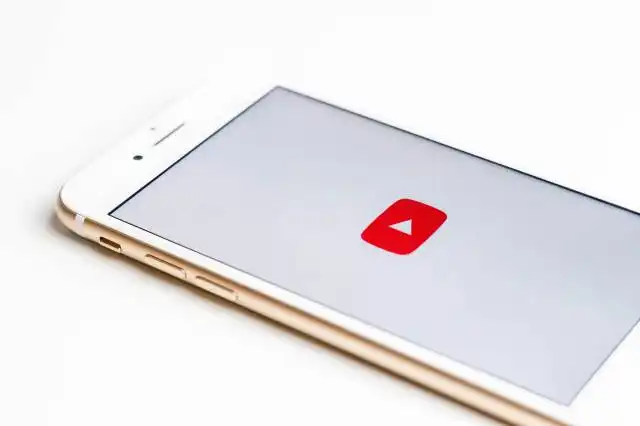Start a Blogging Business
Dive into the Bountiful Ocean of Blogging: A Profitable Adventure!
| Updated


BLOGGING BUSINESS
Take a plunge into the sea of written expression with a blogging business! It's a fantastic entrepreneurial endeavor that lets your thoughts speak to millions while sitting in the comfort of your pajamas. This type of business primarily involves writing and sharing valuable content online about various topics from recipes to personal finance and everything in between. Live your passion and see it transmute into profit as you indulge in comment threads, reader interactions, and an endless world of keyword optimization!
Jump to Business Plan
RELATED BUSINESS IDEAS
Browse ALL Internet & Technology Startups Business Ideas
Discover Your Perfect Domain
Unlock the door to your online success with our hand-picked selection of premium domain names. Whether you're starting a new venture or rebranding an existing one, the right domain can set the tone for your digital presence. Browse through our curated list, each with its unique potential to enhance your brand's visibility and credibility.
BLOGGING MINI BUSINESS PLAN
This a quick reality check to help you identify the strengths and weaknesses of your business concept before you dive in.
Expected Percent Margin:
- Gross Margin: 90-100% (largely depending on hosting costs and promotional activities)
- Net Profit Margin: 60-80% (post deductions of operating expenses)
Earnings Expectations:
- Daily Earnings: $10 - $200
- Weekly Earnings: $70 - $1400
- Monthly Earnings: $300 - $6,000
- Annual Earnings: $3,600 - $72,000
Actions to Hit Those Numbers:
Content Creation:
- Quality Posts: Write or commission at least 2-4 engaging posts on relevant topics every week.
- SEO optimization: Incorporate proper keywords, meta-descriptions, links, and user-friendly formatting.
Monetization:
- Ad Networks: Sign up for ad networks like Google AdSense, Media.net etc.
- Affiliate Marketing: Join affiliate programs related to your blog's niche.
- Sponsored Posts/Reviews: Pitch to brands for sponsored post opportunities.
Marketing and Visitor Acquisition:
- Social Media: Promote posts regularly on relevant social platforms.
- Email Marketing: Build an email list to keep readers engaged and updated.
- Guest Posting: Write guest posts in popular blogs to gain wider exposure.
Technical Aspects:
- Website Performance: Regularly update and maintain your blog for optimal speed and uptime.
- User Experience: Design the blog to be user-friendly, with easy navigation and attractive layout.
Personal Development:
- Learning & Up-skilling: Regularly update your blogging, SEO and marketing skills.
Please note these figures are highly variable and depend on blog's traffic, niche, quality of posts, monetization strategy, and many other factors. Always consult with a business advisor or expert for personalized advice.
NOT WHAT YOU HAD IN MIND? Here are more ideas



Browse ALL Internet & Technology Startups Business Ideas
Grab Your Business Website Name
Before you get caught up in the whirlwind of setting up your business, invest in a domain name. It's a small but significant step that lays the foundation for your brand and makes it easier for customers to find and trust you. Just like you wouldn't build a house without securing the land first, don't build a business without securing your domain name.
"Why? Can't that wait?" Here's why it shouldn't
Step 1: Determine if the Business is Right Endeavor
Breakdown of Startup Expenses
Before beginning a blogging business, it is important to understand the financial costs associated with starting up. This includes the cost of a domain name, hosting fees, and any software or plugins that may be needed. Additionally, there may be costs associated with hiring a web designer or developer to help create the blog. It is important to understand the costs associated with each of these items and create a budget for the startup expenses.
Breakdown of Ongoing Expenses
Once the blog is up and running, there are still ongoing expenses associated with running a successful business. This includes costs associated with marketing, such as pay-per-click advertising, and any other fees associated with maintaining the blog. Additionally, there may be costs associated with hiring a virtual assistant or other staff to help manage the blog. It is important to understand the costs associated with these items and create a budget for the ongoing expenses.
Examples of Ways to Make Money
Once the blog is established, there are a variety of ways to make money. This includes selling advertising space on the blog, affiliate marketing, and offering services such as consulting or web design. Additionally, there may be opportunities to create and sell digital products such as ebooks or online courses. It is important to understand the different ways to make money and create a plan for how to monetize the blog.
Step 2: Name the Business
When deciding on a name for your blogging business, it is important to keep in mind that the name should be memorable, easy to spell, and easy to pronounce. It should also be relevant to the content of the blog and the industry you are in. Additionally, it is important to make sure the name is not already taken by another business. To do this, you can check to see if the domain name is available. If it is not, then you will need to come up with a different name.
When brainstorming potential names, it is helpful to think of words that are related to the topic of the blog and the industry you are in. You can also use a thesaurus to find synonyms for words that are related to the blog. Additionally, you can use a business name generator to help you come up with potential names. Once you have a list of potential names, you can narrow it down to the one that you like the best.
Once you have chosen a name for your business, you will need to register it with the government. This will help protect your business name and ensure that no one else can use it. Additionally, you will need to register the domain name for your website. This will help ensure that your website is easily accessible to potential customers.
Finally, you will need to create a logo for your business. This will help you create a recognizable brand and make it easier for customers to remember your business. You can create a logo yourself or hire a professional designer to create one for you. Once you have a logo, you can use it on your website, business cards, and other marketing materials.
Step 3: Choose a Platform
When it comes to choosing a platform for your blog, there are a few different options. Each platform has its own pros and cons, so it’s important to consider these before making a decision. WordPress is one of the most popular blogging platforms and is great for beginners. It is easy to use and offers a variety of features and customization options. However, it is not as flexible as other platforms, such as Squarespace or Wix. Squarespace is a great option for those who want a more professional and polished look. It is also more expensive than WordPress, but offers more features and customization options. Wix is a great option for those who want a more user-friendly platform. It is also more affordable than Squarespace and WordPress, but it does not offer as many features or customization options.
Domain Name
Once you have chosen a platform, the next step is to choose a domain name. This is the name that will appear in the URL for your blog. It is important to choose a domain name that is easy to remember and reflects the content of your blog. You can use a domain name generator to help you come up with ideas. Additionally, you should make sure that the domain name is available and not already taken by another website. Once you have chosen a domain name, you can register it with a domain registrar.
Web Hosting
The next step is to choose a web hosting provider. This is the company that will host your blog and make it available to the public. There are a variety of web hosting providers available, so it’s important to do your research and choose one that meets your needs. You should consider factors such as cost, reliability, and customer service when choosing a web hosting provider. Additionally, you should make sure that the web hosting provider you choose is compatible with the platform you have chosen.
Design
Once you have chosen a platform, domain name, and web hosting provider, the next step is to design your blog. This includes choosing a theme, colors, fonts, and other design elements. You can use a template or create your own design. Additionally, you should consider the user experience when designing your blog. Make sure that the design is easy to navigate and that the content is easy to read.
Step 4: Design the Blog
When designing a blog, it is important to consider the overall look and feel of the blog. This includes the layout, color scheme, font, and other design elements. Additionally, it is important to consider the user experience when designing the blog. This includes making sure the blog is easy to navigate and read, as well as making sure the content is organized in a way that is easy to understand. Additionally, it is important to consider the functionality of the blog. This includes making sure the blog is optimized for mobile devices and search engines, as well as making sure the blog is secure and has the necessary features to make it successful.
Choosing a Platform
When choosing a platform for the blog, it is important to consider the features it offers, as well as the cost. Popular blogging platforms include WordPress, Blogger, and Tumblr. Additionally, it is important to consider the hosting options available, as well as the technical support offered.
Creating Content
Creating content for the blog is an important part of the design process. It is important to create content that is engaging and informative, as well as content that is optimized for search engines. Additionally, it is important to consider the types of content that will be featured on the blog, such as blog posts, videos, podcasts, and other forms of media.
Optimizing the Blog
Once the blog is designed and content is created, it is important to optimize the blog for search engines. This includes creating meta tags, optimizing images, and creating a sitemap. Additionally, it is important to consider the use of keywords, as well as the use of social media to promote the blog.
Step 5: Write Content
Writing content for a blog is an important part of the blogging business. It is important to create content that is interesting, informative, and engaging. To do this, it is important to have a good understanding of the topics that will be covered in the blog. It is also important to have a good understanding of the audience that the blog is targeting. Additionally, it is important to have a good understanding of the different types of content that can be used, such as text, images, videos, and audio.
Tips on Promoting Content
Once the content has been written, it is important to promote it. This can be done through social media, email marketing, and other forms of online marketing. It is important to create a strategy for promoting the content, such as creating a schedule for when to post and how often. Additionally, it is important to use keywords to make the content more searchable and to use visuals to make the content more engaging. Finally, it is important to track the performance of the content to see what is working and what isn't.
Step 6: Promote the Blog
Promoting the blog is essential for gaining an audience and making money. It is important to find the right balance between organic and paid promotion. Organic promotion involves using social media platforms, search engine optimization (SEO), and other methods to get people to your blog without paying for it. Paid promotion involves using ads, sponsored posts, and other methods to get people to your blog.
When it comes to organic promotion, social media is a great place to start. Creating accounts on platforms like Facebook, Twitter, and Instagram can help you reach a larger audience. Additionally, creating a mailing list and using email marketing can help you reach a more targeted audience.
When it comes to paid promotion, it is important to research different platforms and determine which ones are best for your blog. Platforms like Google Ads, Facebook Ads, and Twitter Ads can help you reach a larger audience. Additionally, sponsored posts on Instagram and YouTube can help you reach a more targeted audience.
It is also important to consider the cost of promotion. Different platforms have different costs associated with them, so it is important to research and compare the costs of different platforms. Additionally, it is important to track the results of your promotion campaigns to determine which ones are working and which ones are not.
Finally, it is important to consider the return on investment (ROI) of your promotion campaigns. Tracking the ROI of your campaigns will help you determine which ones are worth the money and which ones are not. This will help you make more informed decisions about which platforms to use and how much to spend on each one.
Step 7: Monetize the Blog
One of the most popular ways to monetize a blog is through affiliate marketing. This involves promoting products or services from other companies and earning a commission when a sale is made. Other ways to monetize a blog include selling advertising space, creating sponsored content, and offering services such as web design, copywriting, or consulting.
Setting Up Payment Processing
Once you’ve decided on the monetization methods you’ll use, it’s time to set up payment processing. This involves setting up a payment processor such as PayPal or Stripe, so you can receive payments from customers. You’ll also need to set up a merchant account, which is a bank account that allows you to accept credit card payments.
Setting Up an Accounting System
In order to keep track of your income and expenses, you’ll need to set up an accounting system. This can be done with a spreadsheet or a dedicated accounting software program. An accounting system will help you track your income and expenses, as well as calculate your taxes.
Setting Up a Tax System
Finally, you’ll need to set up a tax system. This involves registering with the IRS and setting up a system for tracking and paying taxes. You’ll also need to set up a system for filing your taxes each year. This can be done with a tax software program or by hiring an accountant.
Step 8: Track Performance
Tracking performance is an important step in any business. It helps you understand what is working and what needs to be improved. It also helps you identify areas where you can save money or increase revenue. To track performance, you should create a system that allows you to track key metrics such as website visits, page views, and conversions. You should also track the performance of your blog posts, social media posts, and other marketing efforts. This will help you understand which strategies are working and which ones are not.
Tools for Tracking Performance
There are many tools available for tracking performance. Google Analytics is a great free tool that provides detailed insights into website and blog performance. You can also use tools such as Hootsuite and Buffer to track the performance of your social media posts. Additionally, you can use tools such as A/B testing to test different versions of your website or blog posts to see which one performs better.
Analyzing Performance
Once you have tracked your performance, it is important to analyze the data. Look for trends and patterns in your data that can help you make better decisions. For example, if you notice that certain blog posts are performing better than others, you can create more content similar to those posts. Additionally, if you notice that certain marketing strategies are not performing as well as you had hoped, you can adjust your strategy accordingly.
Making Adjustments
Once you have analyzed your performance data, you can make adjustments to your business strategy. This could include changing the content you create, adjusting your marketing strategy, or making changes to your website or blog. By making these adjustments, you can ensure that your business is running as efficiently and effectively as possible.
Step 9: Grow the Business
Growing a business is a process that takes time, but there are some tips that can help the process go more smoothly. First, it is important to create a plan for growth. This plan should include goals for the business and a timeline for achieving them. Additionally, it is important to focus on marketing and promotion. This could include creating a website, using social media, and attending networking events. It is also important to stay up to date on industry trends and to take advantage of any opportunities that arise. Finally, it is important to stay focused and motivated, even when the going gets tough.
Ways to Make Money
There are a variety of ways to make money with a blogging business. One way is to monetize the blog itself by selling advertising space or offering sponsored posts. Additionally, it is possible to offer services such as web design, content creation, or consulting. It is also possible to create and sell digital products such as ebooks, courses, or templates. Finally, it is possible to create physical products such as t-shirts, mugs, or notebooks.
EXPLORE MORE CATEGORIES
Browse ALL Business Idea Categories
TAKE THE NEXT STEPS










